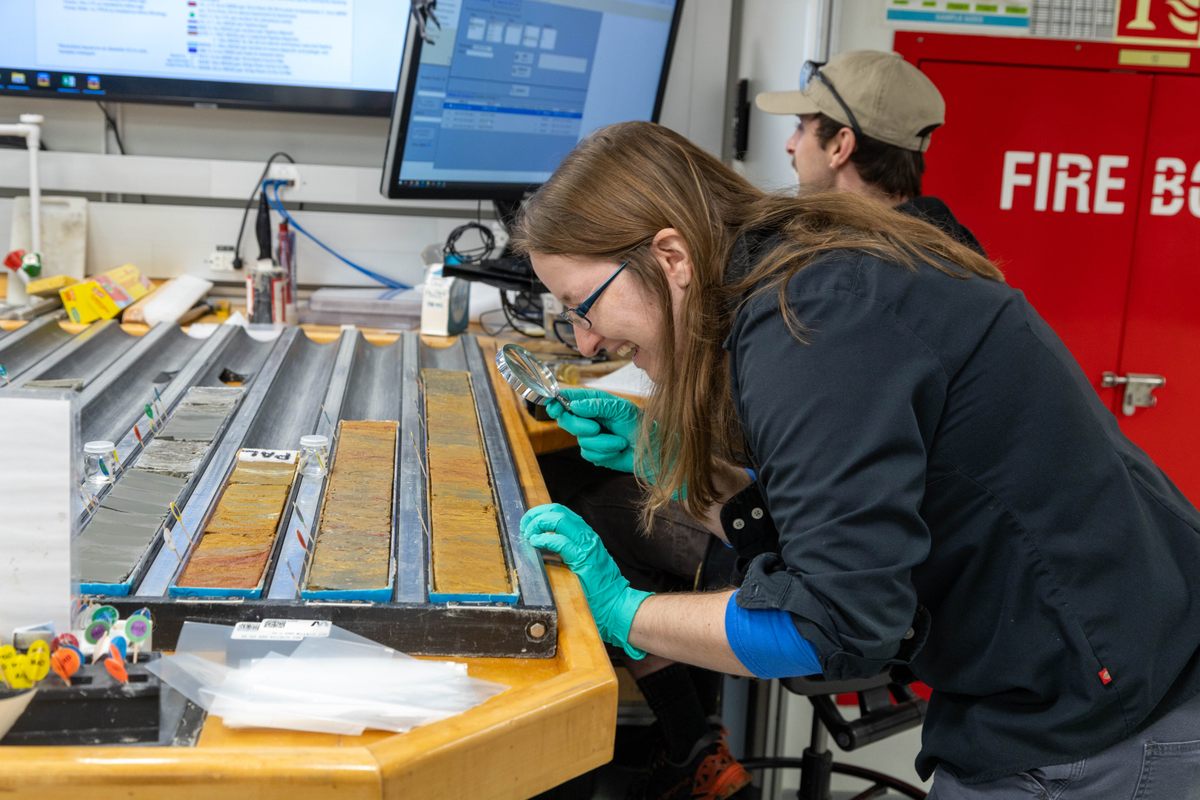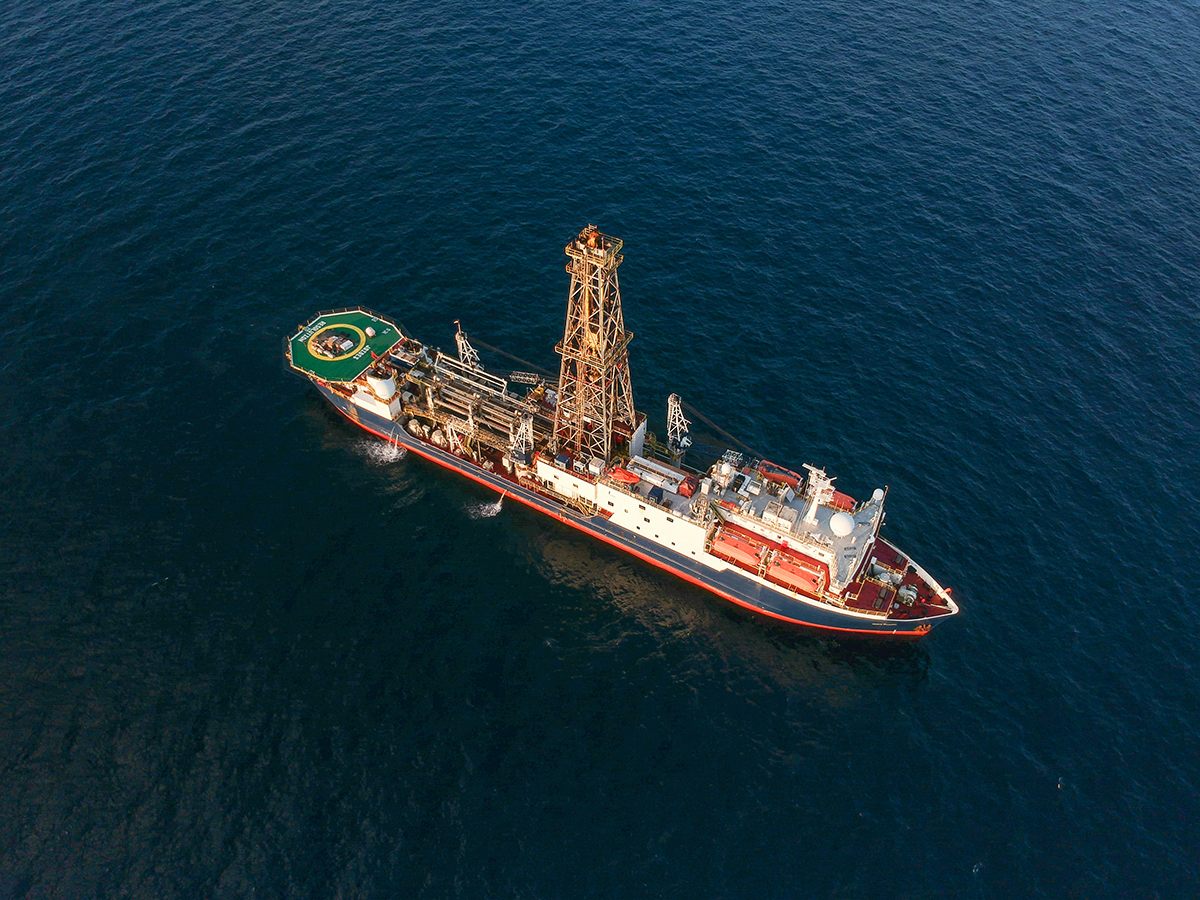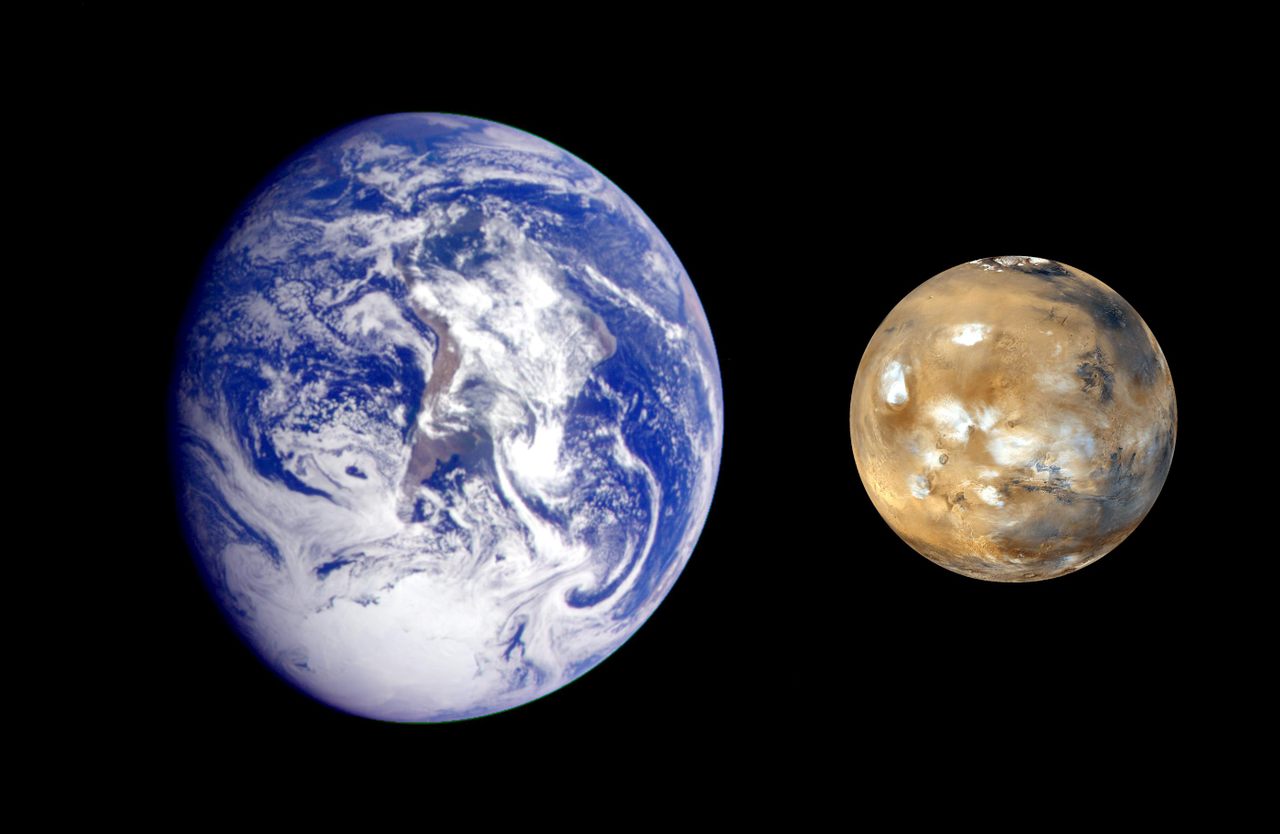We Know the Moon Makes Tides, but What About Mars?
Recent research suggests that our planetary neighbor causes a stir deep under the ocean.

Let’s be blunt. Astrology has no basis in scientific fact. The motions of the planets and moons don’t meaningfully bolster or perturb your life. But that doesn’t mean that the planets don’t affect one another—and lately, scientists have come to suspect that Mars may be literally stirring tides within the depths of our world.
Don’t worry—we’re now in the realm of astronomy and astrophysics. Planets, in a very real sense, do directly influence one another. The more massive they are, the larger their gravitational influence, and although Mars may be rather diminutive—about one-sixth the volume of Earth—it is close enough, and just about big enough, to affect us. Its gravitational field is ever-so-gently pulling at Earth enough to create swirling vortices in our oceans.
A recent study, published in the journal Nature Communications, came to this conclusion by looking at sediment cores extracted from deep-sea sites all over the world, from the Pacific Ocean to the Indian Ocean, from Arctic waters to those just shy of Antarctica. The cores are the geologic equivalent of pulling an ancient tome off the shelf of Earth’s great archive—sedimentary records of ever-changing climate and environmental conditions far below the waves.
It is not just the content of the water but the way it flows that can be preserved within these cores. This information matters for a range of reasons, not least because the movement of deep-sea water affects how heat is transported around the planet, which can induce climatic swings, from minor deviations to major events, as if the oceans are fiddling with a global thermostat. For this new study, an international team of scientists took a look at almost 300 sediment cores providing a chronicle of deep-sea aquatic shifts dating back 65 million years.

The cores tell a curious story, one in which deep-sea currents wax and wane over time. That isn’t unusual by itself: The ocean is rife with currents that don’t remain constant. But these most Stygian currents seem to change their behavior in a cyclical manner—they strengthen and weaken in aggregate over a 2.4-million-year cycle. And when they reach their peak they can be fairly potent, creating whirlpool-like maelstroms that can scar and erode the seafloor.
That the team connected these whirlpools to Mars may sound like a bit of a stretch. Why look off-world when there’s so much to understand about these processes here? But it’s long been known that, on geological timescales, small shifts in the way that planets orbit the Sun can lead to significant changes in their climates. Earth itself is known to be bound by multiple astronomical cycles, from those with relatively short periods of 19,000 years to others that recur every 400,000 years.
As our planet voyages around our local star, it wobbles in three different ways: Its path around the Sun can sometimes be a little more elliptical than at other times; Earth is tilted on its north pole–south pole axis, as if it’s leaning over, and that angle changes over time; and Earth jiggles about on that axis, moving back and forth, a bit like a spinning top starting to lose balance.
These oscillations are known as the Milankovitch cycles. The first, known as Earth’s eccentricity, happens on a cycle of 100,000 years. The second, Earth’s obliquity, goes back and forth once every 41,000 years. And the third, Earth’s precession, shifts to and fro every 23,000 years. And this trio of planet-scale teeterings are consequential: On those extremely long timescales, they influence the planet’s climate.

This new study suggests that Earth is affected by another cycle: a 2.4-million-year whirlpool-making orbital rhythm can also tweak the climate. Sometimes, heat-transporting ocean currents can stall, which can change the temperature of large bodies of water. The authors of the new study wonder if these tempests may be capable of invigorating some of those submarine rivers. But the driving cause of these whirlpools seems pretty clear. It’s Mars.
Despite all the little deviations and gravity-influenced weirdness, our solar system has a grand, complex sense of order to it—so much so that astronomers can plot out, to a remarkable degree of precision, where planets, moons, asteroids, and comets will be far into the future, just as they can carefully recreate their migrations in the distant past.
It seems that when Mars is in a certain position in space, its relatively weak gravity field manages to wrap itself around Earth in such a way that it pulls it about, just a little. Not too dissimilar from the way in which the Moon’s gravity creates tides in Earth’s seas, Mars creates somewhat incognito tides deep within the world’s oceans on that 2.4-million-year schedule—something only detectable thanks to the buried sediments that documented these submarine swirls.

It’s this part of the study that satisfies me to no end. Space may be inconveniently big, but the power of gravity means that no planet is truly an island unto itself.
Jupiter, for example, eats up a multitude of asteroids and comets that might otherwise be headed for other planets, ones that are less able to take a hit. Most famously, in 1994, dozens of fragments of the comet Shoemaker-Levy 9—each of which would have been powerful enough to maim billions of people on Earth—plunged harmlessly into the gas giant’s skies.
Our Moon may be small compared to Jupiter, but we all know how it causes our seas and oceans to ebb and flow along our shorelines. But that’s nothing compared to what can be found elsewhere in the solar system. The combined forces of various closely spaced moons of Jupiter and Saturn ultimately drive tides within solid rock and ice. In the case of Io, a Jovian moon, this rock-bending friction generates an immense amount of heat; that furnace maintains an ocean of magma that powers hyperactive volcanic eruptions on its surface. The same process happens within gelid Enceladus, a mirror-like satellite of Saturn, which sustains a liquid-water ocean that may be amenable to life.

Gravity, a force of nature not entirely understood by scientists, permeates everything, like an invisible but tangible weave coursing through the fabric of reality. Over millions of years, small changes in the orbits of celestial objects dancing around in the same galactic neighborhood can add up, culminating in acts of grand creation and destruction. More often, instead of explosive acts, gravity operates in subtleties—whether that’s by carving out space rock-free lanes in the asteroid belt between Mars and Jupiter, or by leaving its signature in sediments in Earth’s watery abysses.
Astronomy is an awe-inspiring subject, but not only because it offers a rigorous, if still incomplete, explanation of the universe and its myriad isles. It invokes a sense of wonder because, unlike horoscopes, it reveals how worlds, and their gravitational tendrils, can perform acts of real magic—in this case, a sleight-of-hand on Earth, performed by Mars.
Robin George Andrews is a doctor of volcanoes, an award-winning freelance science journalist, and the author of two books: Super Volcanoes: What They Reveal About Earth and the Worlds Beyond (2021), and the upcoming How to Kill an Asteroid: The Absurd True Story of the Scientists Defending the Planet (2024).















Follow us on Twitter to get the latest on the world's hidden wonders.
Like us on Facebook to get the latest on the world's hidden wonders.
Follow us on Twitter Like us on Facebook